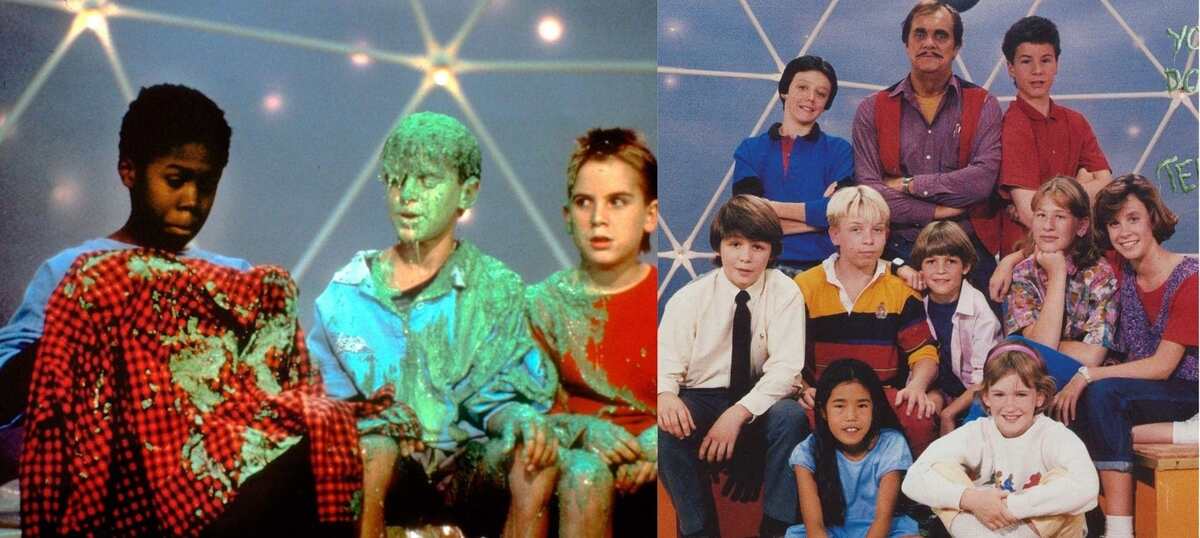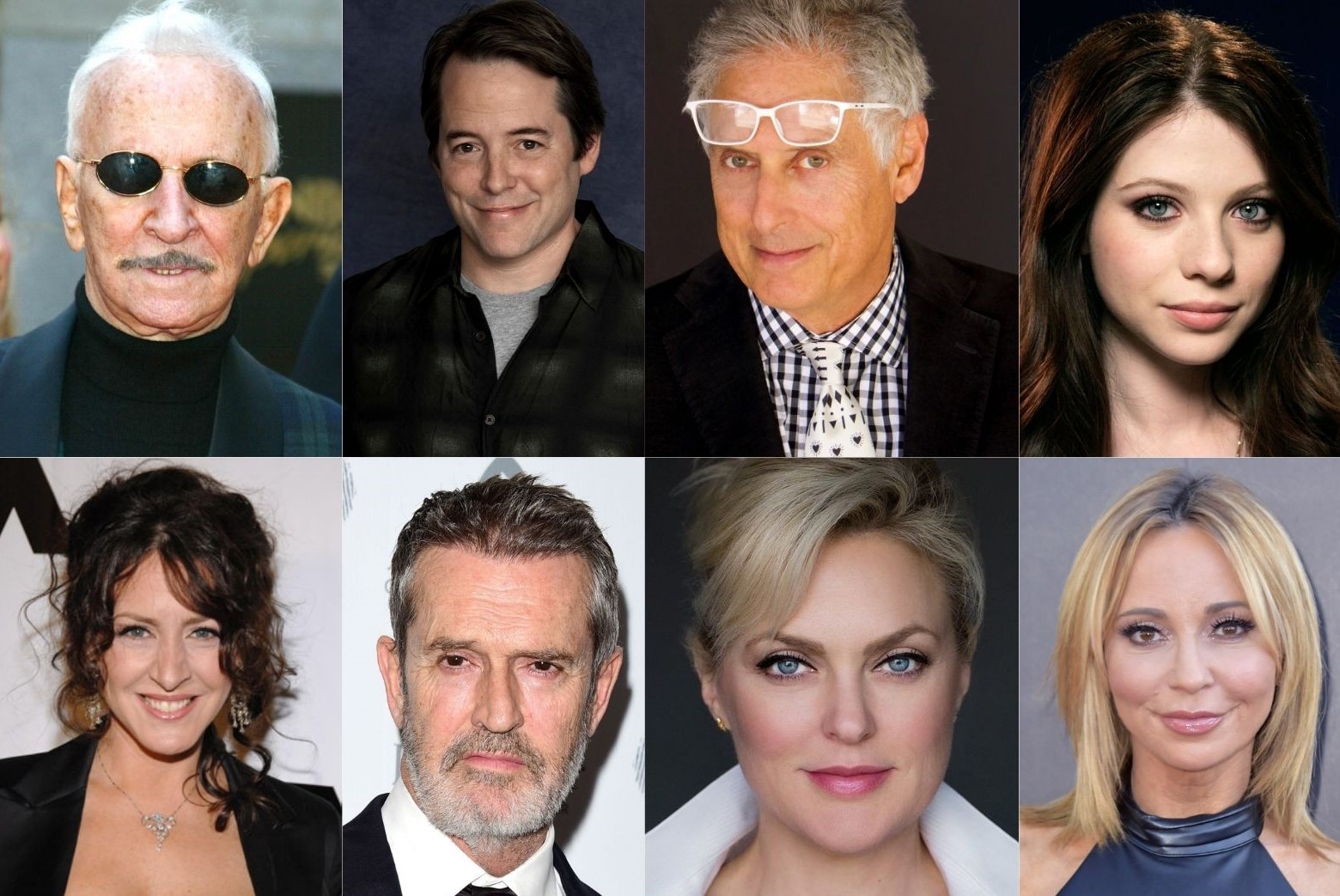You Can’t Do That on Television was a groundbreaking Canadian sketch comedy series that debuted locally on Ottawa’s CJOH-TV in 1979 before expanding to a broader audience in the United States via Nickelodeon in 1981. Known for its irreverent humor and unique format, the show left an indelible mark on television history, particularly for its association with Nickelodeon’s iconic green slime. The series not only entertained audiences but also launched the careers of several notable performers. This article explores the You Can’t Do That on Television Cast, examining their roles and contributions to the show’s success.
Early Beginnings
The series began as a locally produced, low-budget variety show featuring a mix of comedy sketches, music videos, and live phone-in contests. The You Can’t Do That on Television Cast consisted predominantly of adolescent and teenage actors, performing in a format reminiscent of popular shows like Rowan & Martin’s Laugh-In and Second City Television. Veteran actor Les Lye played a central role throughout the series’ run, embodying various recurring characters and establishing himself as the show’s cornerstone.
Full You Can’t Do That on Television Cast
Les Lye, The Backbone of the Show
Les Lye, a veteran comedy actor, was the sole adult performer for much of the series, delivering memorable performances in multiple roles. Lye’s versatility allowed him to portray various characters, from the hapless “Lance Prevert,” a bumbling father figure, to the scheming “Ross,” the show’s technical producer. His comedic timing and ability to engage with the young cast made him indispensable to the show. Lye’s presence helped anchor the series, providing a consistent element of humor and reliability throughout its run.
Abby Hagyard, Adding a New Dimension
In 1982, Abby Hagyard joined the cast, significantly contributing to the show’s dynamic. Hagyard, known for her role as “Valerie,” the maternal counterpart to Lye’s “Lance,” brought a new layer of comedic depth to the series. Her interactions with Lye’s character added a familial aspect to the show, contrasting with the otherwise chaotic and irreverent tone. Hagyard’s performance was pivotal in maintaining the show’s appeal during its transition from local to national broadcast.
Christine McGlade
Christine McGlade, known for her role as Christine, was a prominent cast member in 88 episodes. Her comedic timing and relatable performances helped shape the show’s early years, and hMcGlade’sce was instrumental in defining its tone and show.
Lisa Ruddy
Lisa Ruddy appeared in 66 episodes, portraying Lisa with charm and charisma. Her performances were characterized by a genuine relatability that resonated with viewers. Ruddy’s role in the series contributes to its memorable and engaging content.
Alasdair Gillis
Alasdair Gillis made his mark in 58 episodes, showcasing his talent through various roles. His involvement from 1982 to 2004 highlighted his versatility and ability to connect with audiences—Gillis’s perfoGillis’swere notable for their humor and depth, enriching the show’s characteristics.
Doug Ptolemy
Doug Ptolemy appeared in 34 episodes, bringing his unique comedic style to the series. His portrayal of Doug Ptolemy and other characters contributed to the show’s dynamicshow’snt—Ptolemy’s perfPtolemy’swere characterized by their distinctive humor and engaging delivery.
Vanessa Lindores
Vanessa Lindores, featured in 37 episodes, portrayed her with a blend of humor and charm. Her role was marked by captivating performances that added depth to the series. Lindores’s lonLindores’solvementlonLindores’ solution emphasized her significant impact on the show.
Kevin Kubusheskie
Kevin Kubusheskie, who appeared in 25 episodes, played various roles that showcased his versatility. His involvement in the series added a unique dimension to the show’s character, reflecting his skill in engaging audiences with dynamic performances.
Chris Bickford
Chris Bickford’s role in 26 episodes added a personal touch to the series. From 1989 to 1990, his appearances brought a genuine and engaging presence, contributing to the show’s diverse shows and diverse shows and connecting with viewers uniquely.
Adam Greydon Reid
Adam Greydon Reid appeared in 21 episodes, portraying Adam with a distinct comedic flair. From 1985 to 1990, his involvement highlighted his ability to enthrall audiences and add depth to the series’ humor. series’Wilson
Teddy Wilson, featured in 18 episodes, played himself, contributing to the show’s personashow’sengaging content. His role during the later years of the series was characterized by a genuine presence that resonated with viewers.
Brodie Osome
Brodie Osome appeared in 10 episodes, showcasing his talent through various roles. His involvement from 1981 to 2004 reflected his lasting impact on the series, adding a unique dimension to the show’s character.
Christian Tessier
Christian Tessier’s episodes highlighted his talent and charisma. From 1989 to 1990, his involvement was marked by dynamic performances that enriched the show’s later show with engaging content.
Carlos Braithwaite
Carlos Braithwaite appeared in 13 episodes, bringing a unique flair to his role. A memorable presence and distinct comedic style characterized his performances from 1989 to 1990.
Justin Cammy
Justin Cammy’s role in iCammy’s episodes from 1983 to 2004 demonstrated his versatility and comedic timing. His performances added depth to the series and showcased his ability to engage audiences with dynamic roles.
Amyas Godfrey
Amyas Godfrey appeared in 14 episodes, portraying Amyas with humor and charm. From 1986 to 1990, his role was marked by engaging performances contributing to the show’s memorabshow’sents.
Jennifer Brackenbury
Jennifer Brackenbury’s Brackenbury’sn 14 episodes highlighted her talent and dedication. Her performances were characterized by a distinctive presence, contributing to the series’ engagiseries’ative and comedic elements.
Kevin Schenk
Kevin Schenk, featured in 11 episodes from 1979 to 1981, portrayed Kevin Schenk with a notable presence. His contributions during the series’ early years significantly shaped its initial success.
Matthew Godfrey
Matthew Godfrey’s episodes from 1986 to 1987 showcased his talent and versatility. His involvement contributed to the series’ dynamic and engaging performances.
Jill Stanley
Jill Stanley appeared in 12 episodes between 1989 and 1990, showcasing her talent with captivating performances. Her role added depth to the show’s later reflects her ability to connect with audiences.
Martin Kerr
Martin Kerr’s role in five episodes from 1981 to 1983 demonstrated his talent and versatility. His performances contributed to the series’ engagiseries ‘ent and diverse cast.
Sariya Sharp
Sariya Sharp appeared in 11 episodes from 1989 to 1990, bringing a distinct charm to her role. Her performances were characterized by a captivating presence, enriching the show’s later yshow’sJono Gebert.
Jono Gebert’s involGebert’sn ten episodes from 1979 to 1981 showcased his talent and versatility. His performances added depth to the series and reflected his ability to engage audiences with dynamic roles.
Marjorie Silcoff
Marjorie Silcoff, appearing in 8 episodes from 1984 to 2004, demonstrated her talent with memorable performances. Her role added a unique dimension to the series, contributing to its diverse cast and engaging content.
Rodney Helal
Rodney Helal appeared in nine episodes from 1979 to 1981, portraying Rodney with a notable presence. His contributions during the series’ early years were significant in shaping its initial success and character roster.
Stephanie Chow
Stephanie Chow’s involvement in nine episodes between 1985 and 1987 highlighted her talent and engaging performances. Her role added a unique dimension to the series, contributing to its dynamic content.
Stephanie Bauder
Stephanie Bauder appeared in 10 episodes from 1989 to 1990, showcasing her talent with captivating performances. Her role added depth to the show’s later reflects her ability to connect with audiences.
Luke McKeehan
Luke McKeehan, featured in 6 episodes from 1982 to 1984, demonstrated his talent and versatility. His performances contributed to the series’ engagiseries ‘ent and diverse cast.
Nick Belcourt
Nick Belcourt appeared as himself in 6 episodes between 1989 and 1990, adding a personal touch to the series. His involvement was characterized by a genuine presence, enhancing the show’s connection with its viewers.
Darryll Lucas
Darryll Lucas’s portraLucas’sZilch, which aired in seven episodes from 1981 to 1982, showcased his talent and comedic style. His role added a unique dimension to the series, reflecting his ability to engage audiences with dynamic performances.
Klea Scott
Klea Scott’s role in five episodes from 1982 to 1984 demonstrated her ability to captivate viewers with her performances. Her involvement in the series contributed to its rich character landscape.
Kevin Somers
Kevin Somers appeared in 8 episodes from 1979 to 1981, showcasing his talent with engaging performances. His role significantly shaped the series’ early years and contributed to its success.
Kevin Ward
Kevin Ward’s involvement in seven episodes between 1989 and 1990 highlighted his talent and versatility. His performances added depth to the show’s later shows, reflecting his ability to connect with audiences.
Eugene Contreras
Eugene Contreras appeared in 7 episodes from 1982 to 1984, showcasing his talent with memorable performances. His role contributed to the series’ dynamic and engaging narrative.
The Whole Crew
Series Directed by
Geoffrey Darby (60 episodes, 1979-1984)
Brenda Mason (48 episodes, 1984-1987)
Gerben Heslinga (20 episodes, 1989-1990)
Roger Damon Price (11 episodes, 1984-1989)
Brian Lebold (5 episodes, 1982-1984)
Alex Sutton (5 episodes, 1989)
Series Writing Credits
The writing team for You Can’t Do That on Television Cast shaped the show’s unique style. The key contributors included:
Roger Damon Price (142 episodes as writer, 1979-1990)
Geoffrey Darby (77 episodes as writer, 1979-1985)
Adam Greydon Reid (30 episodes, 1989-1990)
Josh Morris (20 episodes, 1985-1987)
Rick Jones (15 episodes, 1982-1984)
Dan Lalande (13 episodes, 1982-1984)
Derek Diorio (12 episodes, 1982-1984)
Dick Cooper (11 episodes, 1984-1985)
The writers played a pivotal role in developing the show’s skits ashow’sning gags, contributing to its enduring popularity and cultural impact.
Critical Production and Creative Team
Series Produced by
Jeffrey C. Weber (Executive Producer, 39 episodes, 1981-1984)
Geoffrey Darby (Producer, 1 episode, 1983)
Gerben Heslinga (Technical Producer, 1 episode, 1983)
Bryn Matthews (Executive Producer, 1 episode, 1983)
Roger Damon Price (Producer, 1 episode, 1983)
Kevin Kubusheskie (Assistant Producer, 1989-1990)
The producers were instrumental in overseeing the production and ensuring the smooth operation of the show.
Series Music by
The National Press Club & Allied Workers Jazz Band (Unknown episodes)
The music played by the jazz band added a distinctive auditory element to the show, enhancing its overall appeal.
Series Production Design by
John Galt (1 episode, 1984)
Galt’s work in Gestalt’s design contributed to the series’ visual aesthetic.
Series Makeup Department
Lizzie Ciesluk (Makeup Artist, two episodes, 1983-1984)
Ciesluk’s content ensured the cast’s appearance with the show’s comedicshow’sften outlandish style.
Series Production Management
Susan Ventura (Production Secretary, 1 episode, 1983)
Ventura’s role management helped maintain the show’s organizational aspects.
Series Art Department
Sandy Thain (Staging Crew Chief, two episodes, 1983-1984)
Dean Carley (Properties, 1 episode, 1984)
Andre Dupuis (Properties, 1 episode, 1984)
The art department was crucial in creating the sets and props that brought the show’s sketcheshow’sife.
Series Sound Department
Jim Clarke (Audio, 1 episode, 1983)
Gilah Friedberg (Audio, 1 episode, 1983)
The sound department ensured high-quality audio, which was essential for the series’ comedic timing and overall production value.
Series Camera and Electrical Department
Ron Austin (Camera, 1 episode, 1983)
Roger Barrow (Lighting, 1 episode, 1983)
Paul Boudreau (Lighting, 1 episode, 1983)
Randy Maahs (Camera, 1 episode, 1983)
Mike Ringlet (Camera, 1 episode, 1983)
The camera and electrical team captured the show’s visual shows and ensured proper lighting and camera work.
Series Costume and Wardrobe Department
Larry Bent (Wardrobe, 1 episode, 1983)
Christine McGlade (Wardrobe Courtesy, 1 episode, 1983)
Francois Rollin (Wardrobe, 1 episode, 1984)
The wardrobe department contributed to the distinctive look of the show’s characters’ sketches.
Series Music Department
The National Press Club & Allied Workers Jazz Band (Title Music, 1 episode, 1983)
The band provided the theme music, adding a memorable auditory signature to the series.
Series Script and Continuity Department
Sara Snow (Script Assistant, Unknown episodes)
Snow’s role in inSnow’st and continuity ensured that the show’s writing was coherent and consistent.
Series Additional Crew
Andre Dupuis (Properties, 1 episode, 1983)
John Galt (Design, 1 episode, 1983)
Caroline Ives (Production Assistant, 1 episode, 1983)
Mac McIntyre (Video, 1 episode, 1983)
Gary Tobin (Video Tape, 1 episode, 1983)
Carole Hay (Drama Coach, 1 episode, 1984)
David Bertram (Titles, Unknown episodes)
Sara Snow (Drama Coach, Unknown episodes)
Ron Allen (Titles, Unknown episodes)
Vincenzo Fracassi (Titles, Unknown episodes)
Kevin Kubusheskie (Drama Coach, Unknown episodes)
Ildi Palasti (Drama Coach, Unknown episodes)
Ric de Barros (Creator: Official Website, Unknown episodes)
Chris Gough (Official Website Designer, Unknown episodes)
The additional crew played varied but essential roles, from managing props to designing the official website and contributing to the series’ multifaceted production.
Cast Highlights
Among the many cast members, several stand out for their unique contributions and memorable roles:
Ruth Buzzi (1979): She played numerous adult female characters and was known for her engaging performances.
Alasdair Gillis (1982-1986): Served as the second official host and appeared in various sketches.
Stephanie Bauder (1989-1990): Known for her role in Night of the Demons 3 and her appearances on YCDTOTV.
Chris Bickford (1989-1990): The fourth and final host, recognized for his distinctive leather jacket.
Each cast member brought their flair to the series, contributing to its success and enduring legacy.
The Transition to National Television
After a successful initial run, the series transitioned to a national format under the title Whatever Turns You On. This version, which debuted in September 1979, saw a reduction in local content and the introduction of a laugh track. Despite efforts to adapt the show for a broader audience, including adding live performances by Canadian artists and a revised cast, the series needed help with ratings. CTV canceled them in December 1979.
Success on Nickelodeon
In January 1981, Nickelodeon began airing You Can’t Do That on Television Cast in its edited half-hour format. The show’s unique humor and now-famous green slime gag quickly garnered a strong following. By 1983, the series had become Nickelodeon’s Nickelodeon’s show, cementing its place in television history. Nickelodeon’s Nickelodepopularity, one of the show’s popular network programs, of the network’s prognetwork’snd significantly expanded its audience.
The Final Years and Legacy
The cast underwent several changes as the series progressed into the late 1980s and early 1990s. Many original cast members, including Christine McGlade and Alasdair Gillis, departed, making way for new faces. The show’s reliancshow’sathroom humor and slime gags increased, reflecting Nickelodeon’s Nickelodeon’sramming focus. Despite declining ratings, the series continued to air reruns until 1994, after which it was replaced by the similar All That.
2004, a reunion special, Project 131, celebrated the show’s 25th anniversary. It featured several original cast members and offered fans a nostalgic look back at the series and its impact on television comedy.
International Success
You Can’t Do That on Television Cast also achieved success beyond North America. The series was broadcast in Australia, where it enjoyed a substantial following, and in several European countries. Its international appeal highlighted the show’s university and innovative format.
Parodies and Cultural Impact
The series’ influeseries’ends into modern media, with references and parodies appearing in shows like Robot Chicken, Family Guy, and NewsRadio. These homages underscore the lasting impact of You Can’t Do That on Television Cast on contemporary pop culture.
Proposed Reboot
In August 2017, it was announced that a reboot of You Can’t Do That Can’tlevision was in development, with Roger Price returning as executive producer. However, this project was ultimately canceled in 2019, leaving fans to reminisce about the original series and its enduring legacy.
A Delightful Legacy of Slime, Water, and Pies
Water, Slime, and Pies, A Trifecta of Humor
The beloved television show You Can’t Do That on Television Cast (YCDTOTV) garnered acclaim not only for its witty humor and engaging sketches but also for its unique and often messy gags that became hallmarks of the series. These comedic elements—water, slime, and pies—were affectionately termed “stage pollution” and” by the cast “and crew, reflecting their pervasive and sometimes unpleasant nature. This article delves into the specifics of these iconic elements, exploring how they contributed to the show’s endurinshow’slarity.
Water, The Drenching Delight
The water gag was a fundamental component of YCDTOTV’s comeYCDTOTV’sal. Whenever cast members uttered spe, click wr,” such as “water,” “wash,” or “e, “th” y fa” ed a “sudden and chilling cascade of water from above. Initially, this deluge came from shows hurled by off-camera crew members in the show’s formative years. By 1981, however, the method evolved, with water being released from concealed apparatuses overhead. This transition streamlined the process and enhanced the surprise element for the cast and the audience.
By the 1984 season, the scope of the water gag was narrowed, with only the mention of “water” triggering “ng th” dousing. Earlier iterations included terms like “wet” and “H2O,” ex” and” the” array of potential triggers. In an amusing twist, cast members sometimes attempted to evade the soaking by using synonyms in other languages—”agua,” “Wasser” or “E” you”—but “o no av” a “l. The consistency of the water gag remained relatively stable, though variations occasionally included soapy, hot, or even polluted types of water.
Slime, The Signature Green Goo
The green slime, an indelible emblem of YCDTOTV, became synonymous with the show’s identity for this gooey spectacle: “I don’t know.” “Whdon’ttered,” cast members were subjected to a cascade of vibrant green slime. This practice, colloquially known as “sliming,” evolved into “one of the series’ most miseries features, particularly after its prominence increased from 1982 onward.
The inception of the slime was fortuitous. Geoffrey Darby, the show’s writer-shows, recounted that the original slime mixture—composed of leftover cafeteria food—accidentally turned green with mold. Despite initial concerns, the audience’s posiaudience’sion led to the slime becoming a staple of the show. This development was cemented with the 1979 episode “The Green Slim” Show,” which set a r “cord for the number of slimings in a single episode.
While green slime was the primary color used, variations did occur. Episodes featured red, blue, yellow, and even black and white slimes. The slime’s recipe has stayed the same due to cast complaints about its unsavory ingredients. What began as a concoction of rotten food evolved into a more palatable mix of gelatin powder, oatmeal, and baby shampoo. In later years, the slime recipe was simplified to green food coloring and cottage cheese, though this blend had its issues, such as spoilage under studio lights.
Pies, The Classic Slapstick
Pies in the Face was another comedic staple of YCDTOTV, prominently featured, especially in the show’s earlier years. The pie-in-the-face gag, a classic element of slapstick comedy, was frequently employed to elicit laughter. One particular episode, “Drugs” (1981), “centers” ed entirely around this gag, using it to critique drug use in a satirical manner by equating the absurdity of pie-throwing with drug-induced behavior.
Unlike the water and slime gags, specific phrases do not typically trigger pies. Instead, early episodes sometimes used words like “let me have it” or “give it to” me” to initiate a “painting. This spontaneity added an element of unpredictability and surprise, reinforcing the slapstick humor that defined the series.
Conclusion
You Can’t Do That on Television Cast remains a landmark in television history, blending irreverent humor with a unique format that captivated audiences. The show’s cast, including Les Lye, Abby Hagyard, and Christine McGlade, brought unforgettable characters and a dynamic energy that defined its success. Behind the scenes, directors like Geoffrey Darby and writers like Roger Damon Price crafted memorable episodes with team dedication to ensure satire. The innovative approach’s dedication ensured the show’s approach to comedy and audience engagement.








